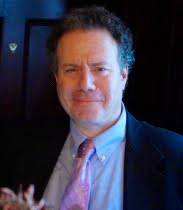Public Speaking Techniques
Back in June, I completed a draft of my book You Have A Voice, my key rules for public speaking success. This week, after allowing the book to ferment for several months, I added a number of example sections. It’s time for a second fermentation, which, as in the case of Champagne, should add some effervescence. I put up the basics for a web page for the book.
In writing the book, my aim was to distill my experience over a 25-year period and give some real perspective on what makes public speaking special. There are plenty of books out there about public speaking. I don’t agree with everything that has been written on the subject, but there is a lot of quality material. It seems senseless for me to treat subjects that have been covered at length. What I do give is my own set of ideas.
In my original outline for the book, I stressed that the actual “how-to” of public speaking may be less important than what I call the “why-to” (why speak at all), the “what to” (the subject matter), and of course the “who to” (the audience). If you know why you’re out there speaking, what you’re speaking about, and who your audience is, you can work on the “how-to” techniques as you go along. Many commentators believe that the method, the way you project yourself, is more important than the message. I disagree with this common view. I believe what you have to say is most important. I write a great deal about attitude, and respect for the audience.
Many public speaking trainers come to the profession from the world of the theater or have credentials as psychologists. Some may have degrees in communications. All that is well and good, but my background is from the world of front-line speaking: Rotary clubs, community groups, Toastmasters and the like. I am a philosopher, and theorize aplenty, but in this book I put constant stress on the pragmatic, real-world side of speaking. Fear is a constant subject in public speaking. I know how to deal with it.
In You Have A Voice I lay out 22 “rules” of public speaking, a distillation of the original 33 rules I keep on my web site (not every one of the 33 is pithy enough to generate a full chapter section in the book). Some of these rules deal with fear and nervousness directly; all of them tend to keep fear in its place. I really think in writing this book that I have put the lid on fear. I’ve never myself been afraid to speak in front of a group. Being silenced, to the contrary, seems the worse fate.


1 Comments:
great tips and a wonderful article that i have read in recent time however for more information about Public Speaking Training you can refer to www.ppsassociates.com
Post a Comment
<< Home